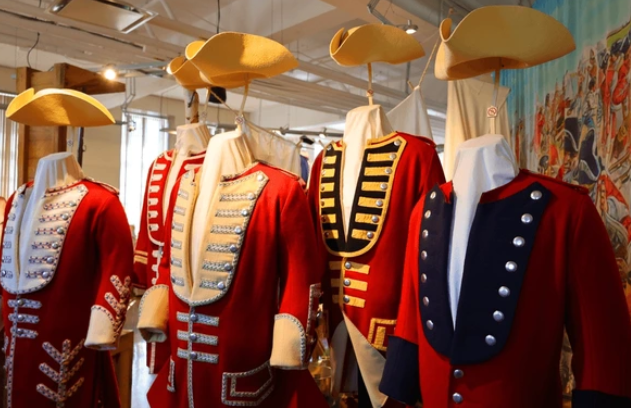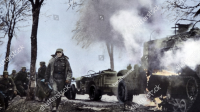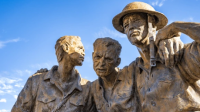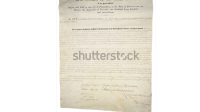Introduction: The Decisive Battle That Shaped North America’s Future
Battle of the Plains of Abraham – The Battle of the Plains of Abraham, fought on September 13, 1759, stands as one of the most crucial military engagements in North American history. This pivotal battle was a turning point in the Seven Years’ War, a global conflict that determined the fate of empires. The victory of British forces under General James Wolfe over the French army led by General Louis-Joseph de Montcalm not only led to the fall of Quebec City but also marked the beginning of the end for French colonial power in North America. The consequences of this battle were far-reaching, influencing the political, cultural, and social landscape of the continent for generations to come.
This article explores the events leading up to the Battle of the Plains of Abraham, the strategies employed by both sides, the unfolding of the battle itself, and its profound impact on the history of North America. By examining the broader context of the Seven Years’ War and the specific details of the battle, we gain a deeper understanding of how this single day in 1759 altered the course of history.
The Seven Years’ War: A Global Conflict with Local Consequences
The Battle of the Plains of Abraham was a significant episode within the larger framework of the Seven Years’ War, a conflict that spanned multiple continents and involved many of the world’s major powers. The war was driven by the imperial ambitions of Britain and France, as they sought to expand their territories and influence around the globe.
The Global Context: The Seven Years’ War
The Seven Years’ War (1756-1763) is often referred to as the first “world war” because it involved battles in Europe, North America, South America, Africa, and Asia. The conflict was rooted in long-standing rivalries between European powers, particularly Britain and France, as they vied for control of overseas colonies and trade routes. In Europe, the war involved complex alliances and saw battles across the continent, with Prussia, Austria, Russia, and Spain also playing significant roles.
In North America, the conflict is known as the French and Indian War, highlighting the alliance between the French and various Indigenous nations who opposed British expansion. The war in North America was fundamentally about control of territory, particularly the rich and strategically important lands in the Ohio Valley, the Great Lakes, and the Mississippi River basin. The outcome of the war would determine which European power would dominate the continent.
The British strategy in North America, spearheaded by Prime Minister William Pitt, focused on capturing key French strongholds to cripple their ability to wage war. Success in North America was seen as vital not only for expanding the British Empire but also for ensuring the security of its existing colonies. The fall of Quebec City, the capital of New France, was identified as a crucial objective that would deal a devastating blow to French power in the region.
The Importance of Quebec City: The Stronghold of New France
Quebec City was the administrative, military, and cultural heart of New France. Founded in 1608 by Samuel de Champlain, it had grown into a fortified city perched on the cliffs of the St. Lawrence River, controlling access to the interior of the continent. The city’s location made it a formidable defensive position, with steep cliffs on one side and the river on the other, and it was well fortified with walls, bastions, and artillery.
For the French, Quebec City was not only a strategic military stronghold but also a symbol of their colonial ambitions in North America. The city served as the hub of French administration, trade, and culture, and its loss would be a severe blow to the morale and governance of New France. The French knew that if Quebec fell, the entire colony would be at risk, as it was the key to controlling the St. Lawrence River and the surrounding territories.
For the British, capturing Quebec City was essential to their plans for dominating North America. Taking the city would cut off French supply lines from Europe, isolate other French forts and settlements, and allow the British to control the vital waterway that connected the Atlantic to the interior. The fall of Quebec would also demonstrate British military superiority and weaken French influence over Indigenous allies in the region.
The Siege of Quebec: Setting the Stage for Battle
The Battle of the Plains of Abraham was the culmination of a long and grueling siege that tested the resolve and ingenuity of both the British and French forces. The siege, which began in the summer of 1759, was marked by strategic maneuvering, artillery bombardments, and several failed attempts to breach the city’s defenses.
Wolfe’s Strategy: A Risky Gamble
General James Wolfe, a young and ambitious officer, was appointed by Prime Minister William Pitt to lead the British assault on Quebec City. Wolfe’s previous successes in the war had earned him a reputation as a determined and capable commander, but the siege of Quebec would prove to be his greatest challenge.
Upon arriving at Quebec in June 1759, Wolfe faced several obstacles. The city’s formidable defenses made a direct assault impractical, and the French forces, led by General Montcalm, were well entrenched. Additionally, the terrain around Quebec was difficult, with steep cliffs, dense forests, and the wide St. Lawrence River creating natural barriers to British movement.
Wolfe’s initial strategy involved a series of bombardments and small-scale raids aimed at weakening the city’s defenses and demoralizing the French troops. He also attempted to force Montcalm into open battle by launching attacks on nearby villages and supply lines, hoping to draw the French out of their fortified positions. However, Montcalm, aware of the British tactics, refused to take the bait and remained within the city’s defenses.
As the siege dragged on into September, Wolfe faced increasing pressure to achieve a decisive victory before the onset of winter, which would make further operations impossible. With his forces suffering from disease, exhaustion, and diminishing supplies, Wolfe devised a bold and risky plan to land his troops on the northern bank of the St. Lawrence River, scale the cliffs to the Plains of Abraham, and force a confrontation with Montcalm’s forces.
Montcalm’s Dilemma: Defend or Attack
General Louis-Joseph de Montcalm, the French commander at Quebec, was a seasoned officer with extensive experience in European warfare. However, the situation he faced in Quebec was challenging, as he had to defend the city with limited resources and against a determined and well-equipped British force.
Montcalm understood that Quebec’s defenses were strong, but he also knew that the city could not hold out indefinitely if the British continued their siege. His strategy focused on maintaining a strong defensive position within the city and waiting for reinforcements from France or a break in the British siege. Montcalm was also concerned about the loyalty of Indigenous allies, who were crucial to French success in the region but whose support was waning as the siege dragged on.
Montcalm’s cautious approach was criticized by some of his officers, who argued for a more aggressive defense or even a counterattack to break the siege. However, Montcalm was reluctant to risk the destruction of his forces in a pitched battle, especially given the difficulties of maneuvering in the rough terrain around Quebec.
As Wolfe prepared his final assault, Montcalm was faced with a critical decision: whether to remain within the city’s walls and risk being trapped or to engage the British on the Plains of Abraham in a desperate attempt to save Quebec. Montcalm chose the latter, a decision that would have profound consequences for the future of New France.
The Battle of the Plains of Abraham: A Brief but Decisive Engagement
The Battle of the Plains of Abraham was fought in the early morning of September 13, 1759, and despite its brevity, it was a decisive engagement that would determine the fate of Quebec City and the future of French Canada.
The British Advance: Scaling the Cliffs
Wolfe’s plan to land his troops on the northern bank of the St. Lawrence River and scale the cliffs to the Plains of Abraham was a daring and risky maneuver. The operation began under the cover of darkness on the night of September 12, as British troops silently rowed across the river and began the arduous climb up the cliffs.
The ascent was treacherous, with soldiers using ropes, ladders, and sheer determination to pull themselves up the steep, rocky slopes. Remarkably, the British forces managed to reach the top without being detected by the French sentries. By dawn, Wolfe’s troops had formed up on the Plains of Abraham, a flat area just outside Quebec City’s walls, ready to confront Montcalm’s forces.
Wolfe’s decision to land at this location was a calculated risk. The Plains of Abraham offered an open battlefield where the disciplined British infantry could deploy effectively, but it also left them vulnerable to a counterattack from the city’s defenders. Wolfe knew that the success of his plan depended on speed and surprise, and he hoped to force Montcalm into a hasty and disorganized response.
The French Response: Montcalm’s Fateful Decision
When Montcalm received word that the British had landed on the Plains of Abraham, he quickly realized the gravity of the situation. The British position threatened the city’s defenses and forced Montcalm’s hand—he could no longer afford to remain within the city’s walls.
Montcalm decided to engage the British on the Plains of Abraham, a decision that was both bold and desperate. He hoped that a swift and aggressive attack could dislodge the British before they could fully establish their position. Montcalm gathered his forces, which included regular French troops, Canadian militia, and Indigenous allies, and marched out to meet the British.
The French forces, numbering around 4,500 men, were hastily organized and advanced toward the British lines. However, the uneven terrain and the rush to engage the enemy led to disorganization in the French ranks. As they approached the British positions, the French troops fired sporadically, but their volleys lacked coordination and impact.
Wolfe, meanwhile, had positioned his 4,400 men in a single line, with light infantry on the flanks and regular infantry in the center. He instructed his troops to hold their fire until the French were within close range, ensuring that their volleys would be devastatingly effective. When the French were just 40 yards away, the British opened fire in unison, unleashing a deadly barrage of musket fire that tore through the French ranks.
The Battle’s Climax: The Death of Two Generals
The Battle of the Plains of Abraham lasted less than an hour, but it was marked by intense and bloody fighting. As the British volleys shattered the French advance, Wolfe ordered his men to fix bayonets and charge, further breaking the already faltering French lines.
During the battle, both Wolfe and Montcalm were mortally wounded, adding a tragic dimension to the engagement. Wolfe, who had been directing the battle from the front lines, was hit by three musket balls, one of which pierced his chest. Despite his injuries, Wolfe continued to issue orders until he collapsed. He lived long enough to learn that his troops had routed the French and that victory was within his grasp.
Montcalm, leading his troops from the front, was struck by a musket ball that pierced his abdomen. Unlike Wolfe, Montcalm survived the battle but succumbed to his wounds the next day. His death, like Wolfe’s, symbolized the end of an era and the beginning of a new chapter in North American history.
With the death of their commander and the collapse of their lines, the French forces retreated in disarray back toward the city. The British pursued them, and by mid-morning, the battle was over. The British had secured a decisive victory, and Quebec City, the heart of New France, was now within their grasp.
The Aftermath of the Battle: The Fall of Quebec and the End of New France
The British victory at the Battle of the Plains of Abraham had immediate and far-reaching consequences. The fall of Quebec City marked the beginning of the end for French colonial power in North America.
The Surrender of Quebec: A City Under Siege
Following the battle, the British forces quickly moved to encircle Quebec City and tighten the siege. With their defenses shattered and morale low, the French garrison within the city was unable to mount an effective resistance. On September 18, 1759, just five days after the battle, the French formally surrendered Quebec City to the British.
The capture of Quebec was a devastating blow to New France. The city had been the administrative and military center of the colony, and its loss effectively severed French control over the rest of the territory. While French forces continued to resist in other parts of North America, the fall of Quebec signaled that the tide had turned irrevocably in favor of the British.
The British occupation of Quebec was marked by a period of uncertainty and tension. The city’s French inhabitants faced a new reality under British rule, with questions about their rights, property, and future hanging in the balance. Despite these challenges, the British victory was celebrated as a major triumph, both in North America and in Britain, where it was seen as a vindication of British military power and strategy.
The Impact on New France: The Beginning of the End
The Battle of the Plains of Abraham and the subsequent fall of Quebec City were critical in sealing the fate of New France. Although French forces continued to resist in other areas, such as Montreal and the Great Lakes region, the loss of Quebec crippled French military and administrative capabilities.
In 1760, less than a year after the battle, British forces captured Montreal, the last major French stronghold in North America. The surrender of Montreal effectively marked the end of French colonial rule in Canada. The Treaty of Paris, signed in 1763, formally ended the Seven Years’ War and confirmed Britain’s control over Canada and other French territories in North America.
The French population of Canada, known as Canadiens, now found themselves under British rule. While the British initially sought to impose their language, laws, and religion on the French-speaking population, they eventually adopted a more conciliatory approach, allowing the Canadiens to retain their language, religion, and legal traditions. This policy of accommodation would later form the basis of the unique cultural and political identity of Quebec within Canada.
The Long-Term Consequences: Redrawing the Map of North America
The Battle of the Plains of Abraham and the subsequent British victory had profound long-term consequences, not only for Canada but for the entire continent of North America. The battle marked a major turning point in the colonial history of the Americas and set the stage for future conflicts and developments.
British Dominance in North America
The British victory in the Seven Years’ War, culminating in the Battle of the Plains of Abraham, established Britain as the dominant colonial power in North America. With the acquisition of Canada, Britain gained control over vast territories, including the fertile St. Lawrence River Valley, the Great Lakes region, and the Mississippi River basin.
This expansion of British territory had significant implications for the future development of North America. It opened up new areas for British settlement and trade, fueling the growth of the Thirteen Colonies and laying the groundwork for the westward expansion that would define American history in the 19th century.
However, the war also left Britain with a massive debt, leading to increased taxation and tighter control over its American colonies. These measures, intended to recoup the costs of the war and manage the expanded empire, contributed to growing tensions between Britain and its colonies, ultimately leading to the American Revolution.
The Legacy of the Battle: A Symbol of National Identity
The Battle of the Plains of Abraham has become a symbol of national identity and historical memory in both Canada and France. For Canadians, particularly French Canadians, the battle represents a defining moment in the history of their nation and the origins of their distinct cultural identity within the larger Canadian framework.
In Quebec, the memory of the battle and the fall of New France is commemorated as a moment of both loss and resilience. Despite the defeat, the French-speaking population of Canada maintained its language, culture, and traditions, even under British rule. This persistence of French identity in the face of adversity is a source of pride for many Quebecers and has played a central role in the province’s unique cultural and political identity.
For France, the loss of Quebec and the subsequent Treaty of Paris marked the end of its colonial ambitions in North America. While the defeat was a significant blow, it also allowed France to refocus its efforts on other parts of its empire, particularly in the Caribbean and India. The battle’s legacy is remembered in France as part of the broader history of the nation’s global influence and its role in shaping the modern world.
Conclusion: The Battle of the Plains of Abraham in Historical Perspective
The Battle of the Plains of Abraham, fought on a single day in September 1759, was a brief yet decisive engagement that had far-reaching consequences for the history of North America. The British victory not only led to the fall of Quebec City and the end of French colonial rule in Canada but also set the stage for the future development of the continent.
The battle’s significance lies not only in its military outcome but also in its impact on the cultural, political, and social landscape of North America. The events of 1759 continue to resonate today, as the legacy of the battle is woven into the fabric of Canadian identity and the history of the British Empire.
Reflecting on the Battle of the Plains of Abraham allows us to understand the complex and interconnected forces that shaped the modern world. It serves as a reminder of the enduring influence of history on the present and the ways in which the outcomes of past conflicts continue to shape the future.
FAQ About the Battle of the Plains of Abraham
What was the Battle of the Plains of Abraham?
The Battle of the Plains of Abraham was a decisive military engagement fought on September 13, 1759, during the Seven Years’ War. British forces under General James Wolfe defeated French troops led by General Louis-Joseph de Montcalm near Quebec City, leading to the fall of the city and the eventual end of French colonial rule in Canada.
Why was the Battle of the Plains of Abraham significant?
The battle was significant because it marked the turning point in the struggle between Britain and France for control of North America. The British victory at the Plains of Abraham led to the fall of Quebec City, the capital of New France, and paved the way for British dominance in the region.
How did the Battle of the Plains of Abraham unfold?
The battle began with a daring nighttime landing by British troops on the northern bank of the St. Lawrence River. The British then scaled the cliffs to the Plains of Abraham, where they engaged the French forces in a brief but intense battle. The British firepower and discipline overwhelmed the French, leading to a decisive victory for the British.
What were the consequences of the Battle of the Plains of Abraham?
The British victory at the Battle of the Plains of Abraham led to the fall of Quebec City and the eventual surrender of Montreal, effectively ending French colonial rule in Canada. The battle also had long-term consequences for the development of North America, including the expansion of British territory and the eventual American Revolution.
How is the Battle of the Plains of Abraham remembered today?
The battle is remembered as a pivotal moment in Canadian history and a symbol of the broader struggle between Britain and France for control of North America. In Quebec, the battle is commemorated as both a moment of loss and a testament to the resilience of French Canadian culture and identity. The Plains of Abraham are now a national historic site in Canada.







Excellent beat ! I would like to apprentice while you amend your web site, how could i subscribe for a weblog website? The account aided me a applicable deal. I had been tiny bit acquainted of this your broadcast provided shiny clear idea